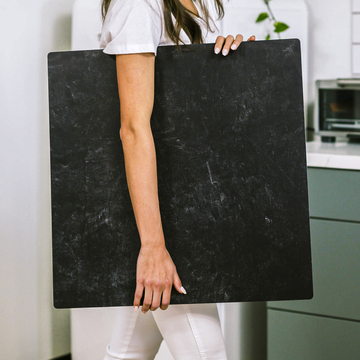After spending over a decade photographing products in professional studios, I've discovered that the difference between an amateur shot and a magazine-worthy image often comes down to one crucial element: the backdrop. Today, I'm pulling back the curtain on the technical artistry behind choosing and using the perfect photography backdrop.
The Hidden Science of Surface Properties
When we dive into the microscopic world of backdrop surfaces, we uncover a fascinating landscape that directly impacts our images. Think of your backdrop's surface as a precisely engineered light management system.
Surface Types and Their Effects
- Ultra-smooth surfaces: Perfect for capturing pristine reflections and creating that high-end commercial look
- Micro-textured finishes: Ideal for eliminating unwanted reflections while maintaining color depth
- Gradient-textured surfaces: Excellent for creating controlled light fall-off in your images
Understanding Light Interaction
The way light behaves when it hits your backdrop determines the final quality of your image. Let's break down the three primary surface interactions:
- Diffuse Reflection: Matte surfaces scatter light evenly, creating soft, even illumination
- Specular Reflection: Glossy surfaces create defined reflections, perfect for dramatic product shots
- Mixed Reflection: Semi-matte surfaces offer the best of both worlds
Temperature and Performance
Here's something most photographers overlook: backdrop performance can change significantly under hot studio lights. During extended shoots, certain materials may:
- Develop subtle surface variations
- Experience temporary color shifts
- Create unexpected reflection patterns
Practical Application Tips
For those shooting in home studios, I recommend starting with a dual-sided backdrop that offers both matte and semi-gloss surfaces. This versatility allows you to tackle various product types without investing in multiple backdrops.
Professional Studio Considerations
- Material durability: Choose surfaces that maintain their properties after repeated use
- Storage solutions: Consider backdrops that resist creasing and store easily
- Temperature stability: Select materials rated for extended use under studio lighting
Remember: the most expensive backdrop isn't always the best choice. Focus instead on finding surfaces that provide the light interaction properties your specific products demand.
Putting It All Together
When selecting your next backdrop, consider these three critical factors:
- The type of products you typically photograph
- Your studio lighting setup and duration of typical shoots
- The post-processing requirements for your final images
By understanding these technical aspects while keeping practicality in mind, you'll be able to choose backdrops that elevate your product photography to new professional heights.


